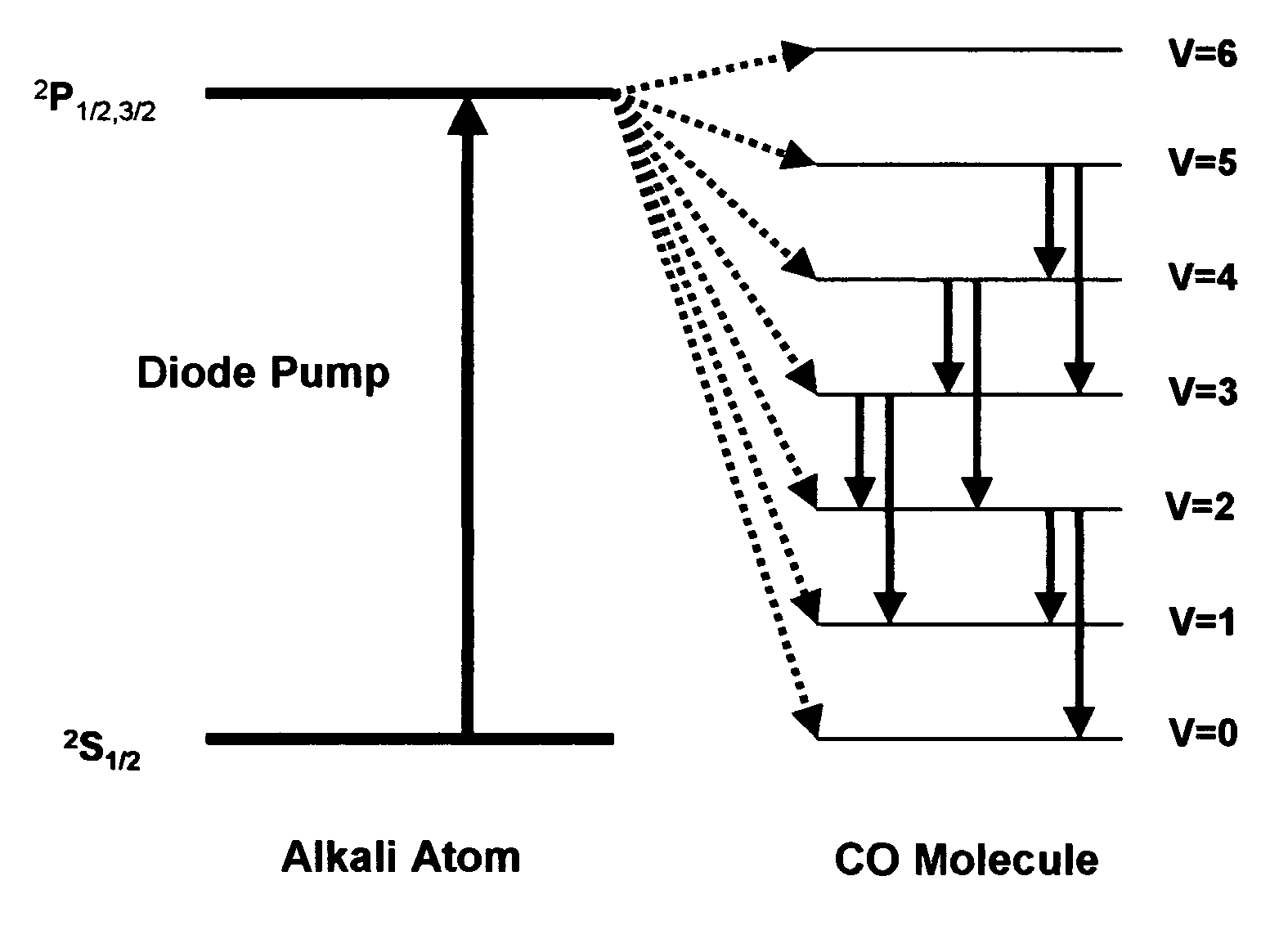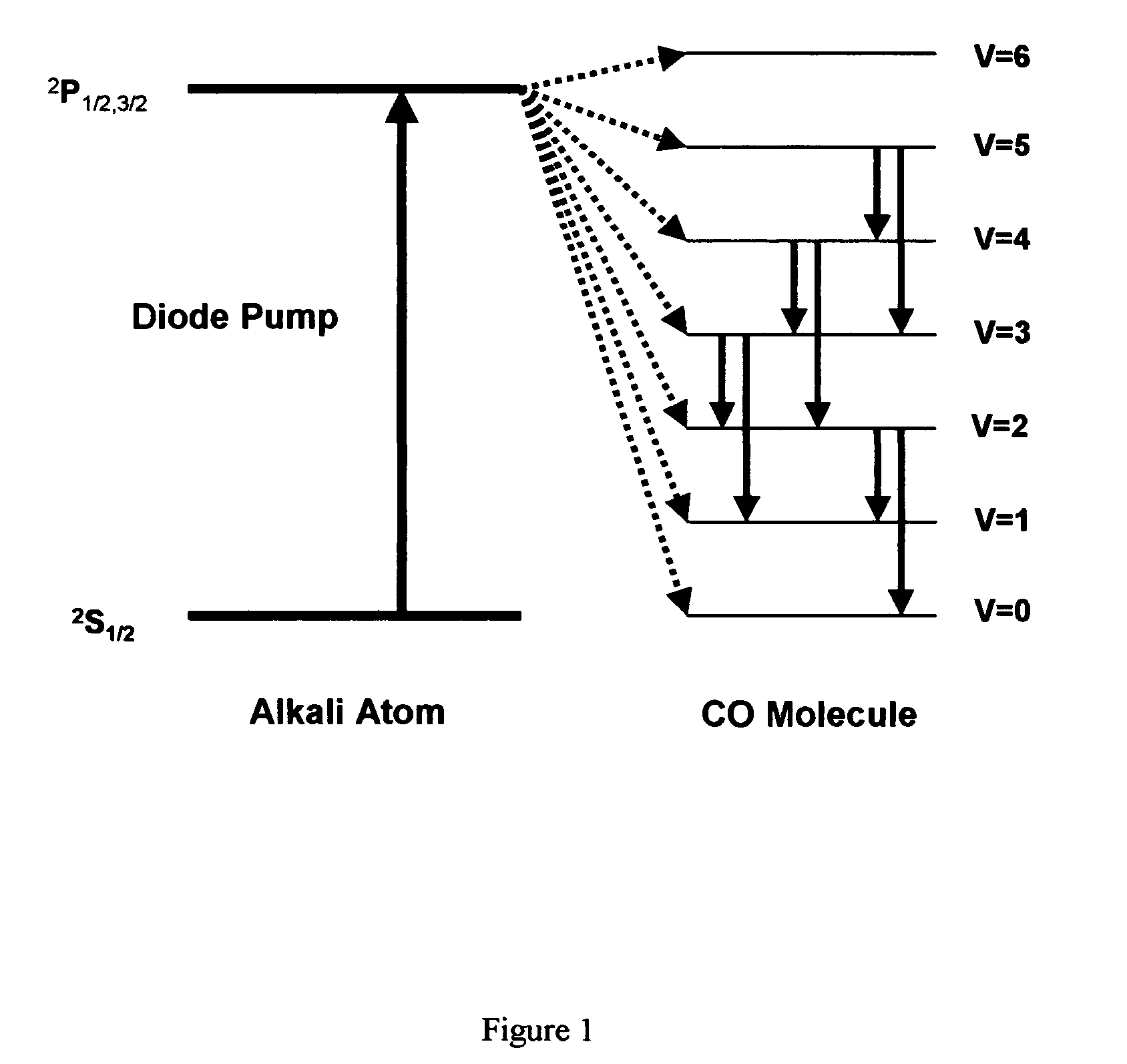Diode pumped alkali-molecular lasers and amplifiers
a technology of alkali-molecular lasers and amplifiers, which is applied in the direction of laser details, active medium materials, electrical equipment, etc., can solve the problems of inability to realize the practical optical pumping of mid-infrared hetero-nuclear molecular lasers in this manner, and the need to provide highly reactive, potentially dangerous chemical precursors to generate excited laser molecules
- Summary
- Abstract
- Description
- Claims
- Application Information
AI Technical Summary
Benefits of technology
Problems solved by technology
Method used
Image
Examples
Embodiment Construction
[0023]The present invention of a diode-pumped alkali-molecular laser combines the efficient diode pump laser excitation of an alkali atom through wing-pumping, and the transfer of excitation energy to a selected molecular collision partner, inducing population inversions between the vibrational levels of the collision partner, thus enabling mid-IR laser action to be achieved on ro-vibrational transitions. The transition wavelengths of the fundamental and 1st-overtone ro-vibrational bands of the hetero-nuclear molecules of interest in the present invention are listed below [see ref.7]:[0024]CO, fundamental bands: ˜4.8 μm; and 1st overtone bands: ˜2.4 μm;[0025]HF, fundamental bands: ˜2.5 μm; and 1st overtone bands: ˜1.3 μm;[0026]HCl, fundamental bands: ˜3.6 μm; and 1st overtone bands: ˜1.7 μm;[0027]HBr, fundamental bands: ˜4.0 μm; and 1st overtone bands: ˜2.0 μm;[0028]CO2, Δv=[0001]–[0200]: ˜9.6 μm, and Δv=[0001]–[1000]: ˜10.6 μm; and[0029]N2O, Δv=[0001]–[0200]: ˜9.6 μm, and Δv=[0001]...
PUM
 Login to View More
Login to View More Abstract
Description
Claims
Application Information
 Login to View More
Login to View More - R&D
- Intellectual Property
- Life Sciences
- Materials
- Tech Scout
- Unparalleled Data Quality
- Higher Quality Content
- 60% Fewer Hallucinations
Browse by: Latest US Patents, China's latest patents, Technical Efficacy Thesaurus, Application Domain, Technology Topic, Popular Technical Reports.
© 2025 PatSnap. All rights reserved.Legal|Privacy policy|Modern Slavery Act Transparency Statement|Sitemap|About US| Contact US: help@patsnap.com



